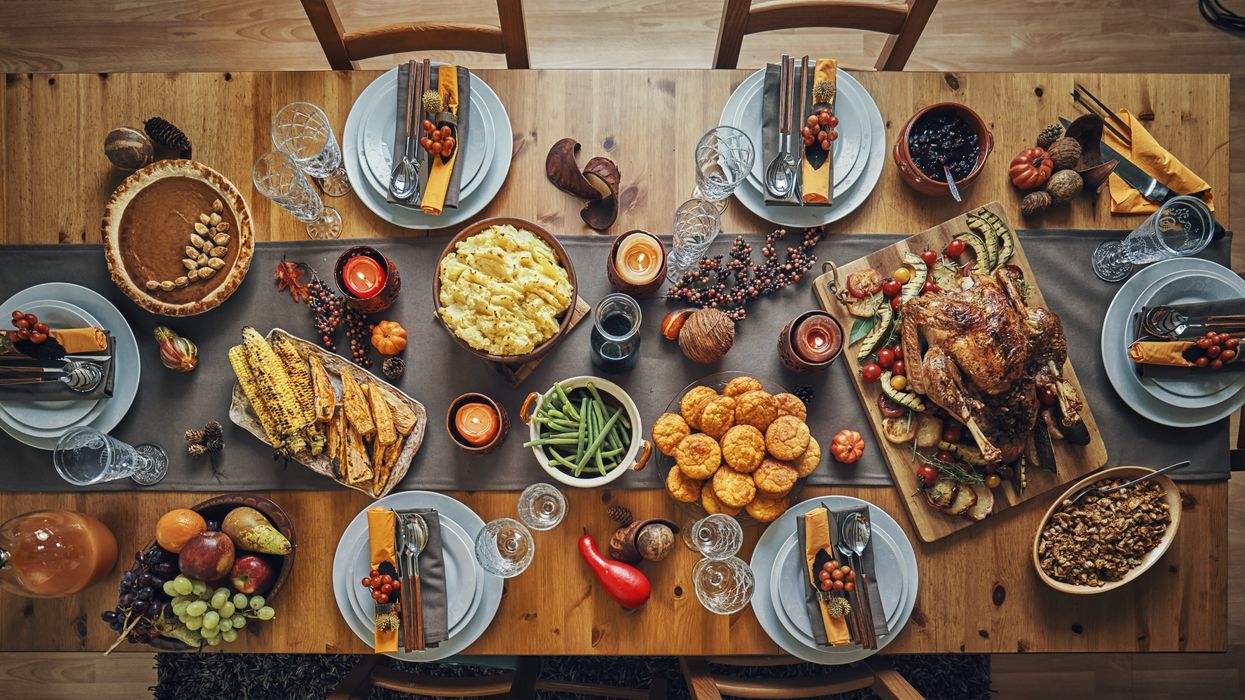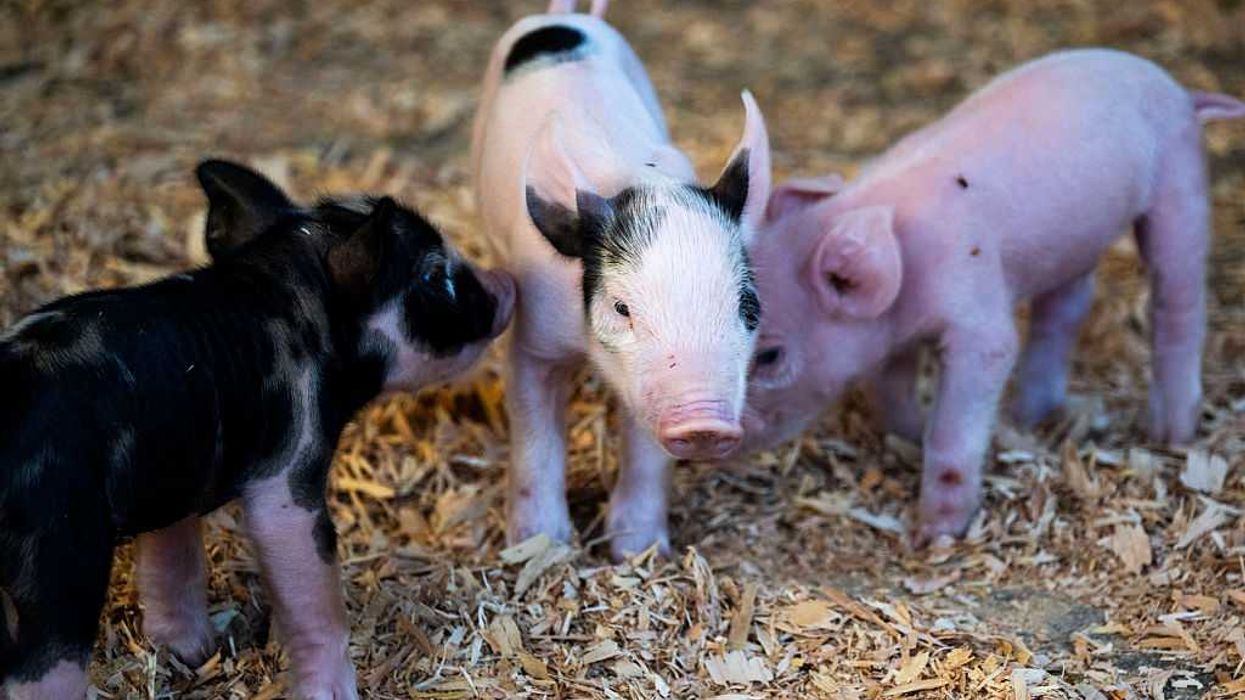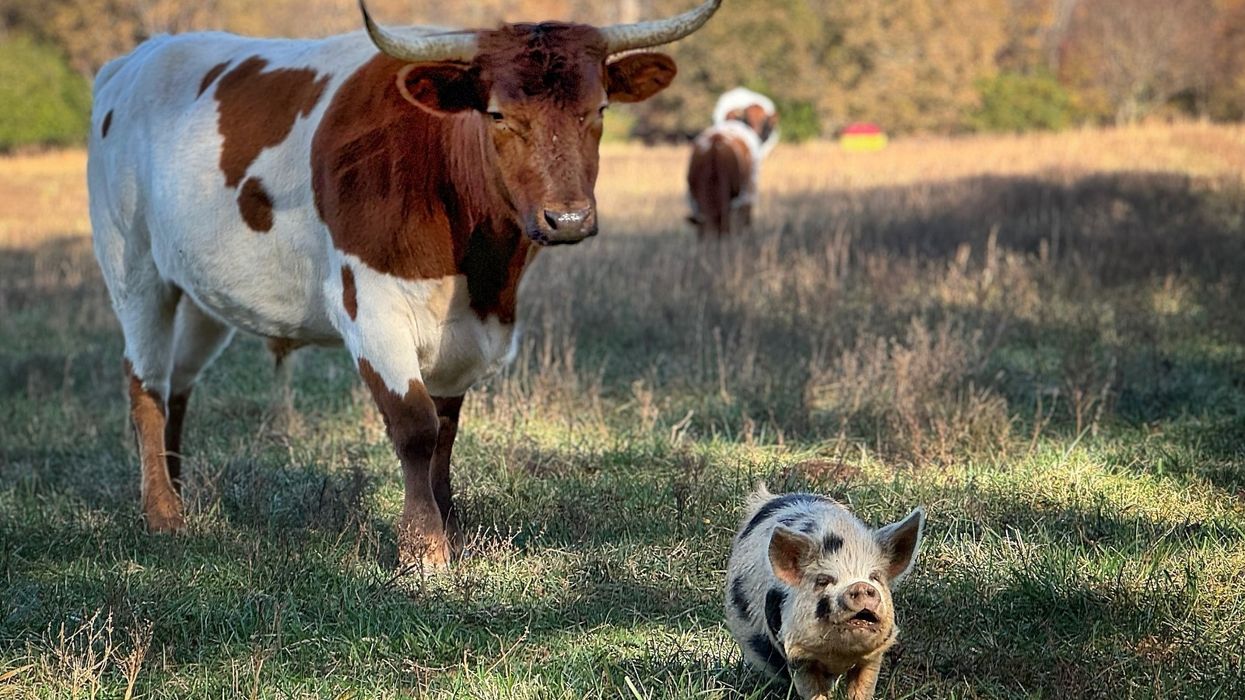Keep the Turkey, Change the System
Changing your diet isn’t the only way to help tackle factory farming; instead, you can donate to charities working to make a difference.
As holiday dishes parade across dining tables nationwide, there’s one question we often try to avoid: Where did my food actually come from?
Every holiday season, Americans consume millions of turkeys, hams, and other festive fare. The uncomfortable reality is that about 99% of the meat in the US comes from factory farms: industrial facilities with crowded conditions, which pollute the environment and push traditional farms out of business.
But this isn’t what we want to think about when we’re celebrating. And we certainly don’t want to swap turkey for tofu.
Here’s the good news: Changing your diet isn’t the only way to help tackle factory farming, and it probably isn’t even the best way. Instead, you can keep eating meat and donate to "offset" your impact. Think of carbon offsets, not just for the climate, but for animal welfare as well.
The meat industry would love us to debate individual food choices endlessly rather than examine the system they’ve created.
This is because some of the charities working to change factory farming are so good at what they do that it really doesn’t cost much to make a big difference. In fact, it would cost the average American about $23 a month to do as much good for animals and the planet as going vegan. Even with all the trimmings, Thanksgiving dinner costs you less than a dollar to offset.
Despite campaigns like Meatless Mondays and Veganuary, meat eating is still on the rise globally. About 5% of US adults identify as vegan or vegetarian, and for years that number has remained stagnant. The "diet change strategy" just isn’t moving us in the right direction.
On the other hand, charities have made huge gains in improving the lives of farm animals and pushing for a more sustainable food system. Groups such as The Humane League, or THL, have pressured major food companies to eliminate cruel practices, like confining egg-laying hens in cages too small to spread their wings. Thanks to THL and others, 40% of US hens are now cage-free, up from just 4% when they started.
But is it hypocritical to keep eating meat and pay a bit of money to feel less guilty?
Not necessarily, if the goal is to make a genuine difference.
In fact, emphasis on individual action has often held movements back. In the early 2000s, one of the biggest promoters of the "carbon footprint"—the idea of measuring and reducing your personal impact on global warming—was the oil giant BP. Shifting the focus from the role of big business to consumer choice plays into the hands of the world’s biggest polluters. In the same way, the meat industry would love us to debate individual food choices endlessly rather than examine the system they’ve created.
Instead, we need systemic change: supporting organizations that push for better regulations, fighting harmful agricultural subsidies, and holding companies accountable for their practices.
Most importantly, writing a check is a much easier ask than changing your entire diet, which means more people will actually help. We know people are willing to give their money to animal causes: About 12% of Americans do it, more than twice as many people as are vegetarian or vegan.
Right now, billions of animals are suffering in factory farms while we argue about what’s on our plates. The fastest path to ending their suffering isn’t waiting for everyone to go vegan: It just needs enough of us to put our money where our mouth is.


